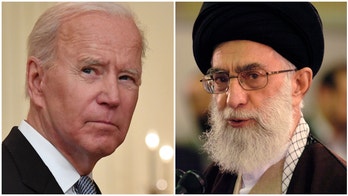According to the 2024 Annual Threat Assessment of the U.S. Intelligence Community, America faces a range of serious threats from adversaries like China, Russia, Iran, and North Korea. These countries employ asymmetric warfare tactics such as cyberstrikes, covert operatives, and chemical agents to destabilize, weaken, and influence the United States. While kinetic conflicts remain unlikely, the threat of a direct confrontation is present if U.S. intervention in Eurasia threatens their strategic goals.

In the realm of international conflict, traditional kinetic warfare—direct military confrontations—is no longer the sole threat. Adversaries like China, Russia, Iran, and North Korea have embraced asymmetric warfare, employing non-kinetic tactics to inflict harm below the threshold of open hostilities. These tactics include:
* **Cyberattacks:** Digital assaults on critical infrastructure, computer systems, and networks.

* **Counterspace weapons:** Targeting satellites and other space assets to disrupt communications and navigation.
* **Covert operatives:** Infiltration of agents into target countries for sabotage, espionage, and influence operations.

* **Biological and chemical agents:** Development and possible use of pathogens and toxins for attacks.
* **Havana Syndrome:** Mysterious health conditions, including brain injuries, believed to be caused by microwave radiation.

The common goal of these adversaries is to destabilize the United States, weaken its economy, and influence government policies. They employ non-kinetic warfare during peacetime to map out access to sensitive systems, infiltrate operatives, and steal technological secrets.
Asymmetric warfare allows adversaries to harm the United States gradually, without triggering a direct military response. These tactics can:

* Disrupt critical infrastructure, such as water systems and energy grids.
* Compromise government officials and steal sensitive information.

* Spread disinformation to undermine trust in institutions and sow discord.
* Cause economic damage by disrupting trade and financial markets.
Russia and China are considered the most advanced and capable asymmetric warfare practitioners. Their partnership has deepened under President Biden, increasing the risk of sharing weapons systems and know-how in military and dual-use technologies.
Cyberattacks are a primary weapon in the arsenal of all four adversaries, targeting critical infrastructure, private sector networks, and government systems. Russia maintains the ability to strike U.S. undersea cables and industrial control systems. China is the most active cyber threat to the U.S., while North Korea and Iran also possess sophisticated cyber capabilities.
The 2024 intelligence report warns of the rising threat of chemical and biological weapons, with China and Russia identified as potential users. Advances in dual-use technology increase the possibility of novel biological threats.
Russia and China are unlikely to initiate a kinetic conflict with the United States due to its superior military power. However, they have war plans in place for such an eventuality if their strategic ambitions in Eurasia are threatened.
Russia and China are likely infiltrating operatives into the United States through the southern border, with plans for sabotage in case of wartime. Their goal is to deter U.S. intervention in their spheres of influence, such as Ukraine and Taiwan.
Russia and China are monitoring the economic and social challenges facing the United States, including inflation and social unrest. These factors may influence their decision-making on potential kinetic conflicts.
The close ties between President Xi Jinping of China and President Vladimir Putin of Russia have strengthened their alliance, potentially emboldening them to take greater risks against the United States. Their cooperation in Eurasia and military partnerships pose a significant threat to American interests.










